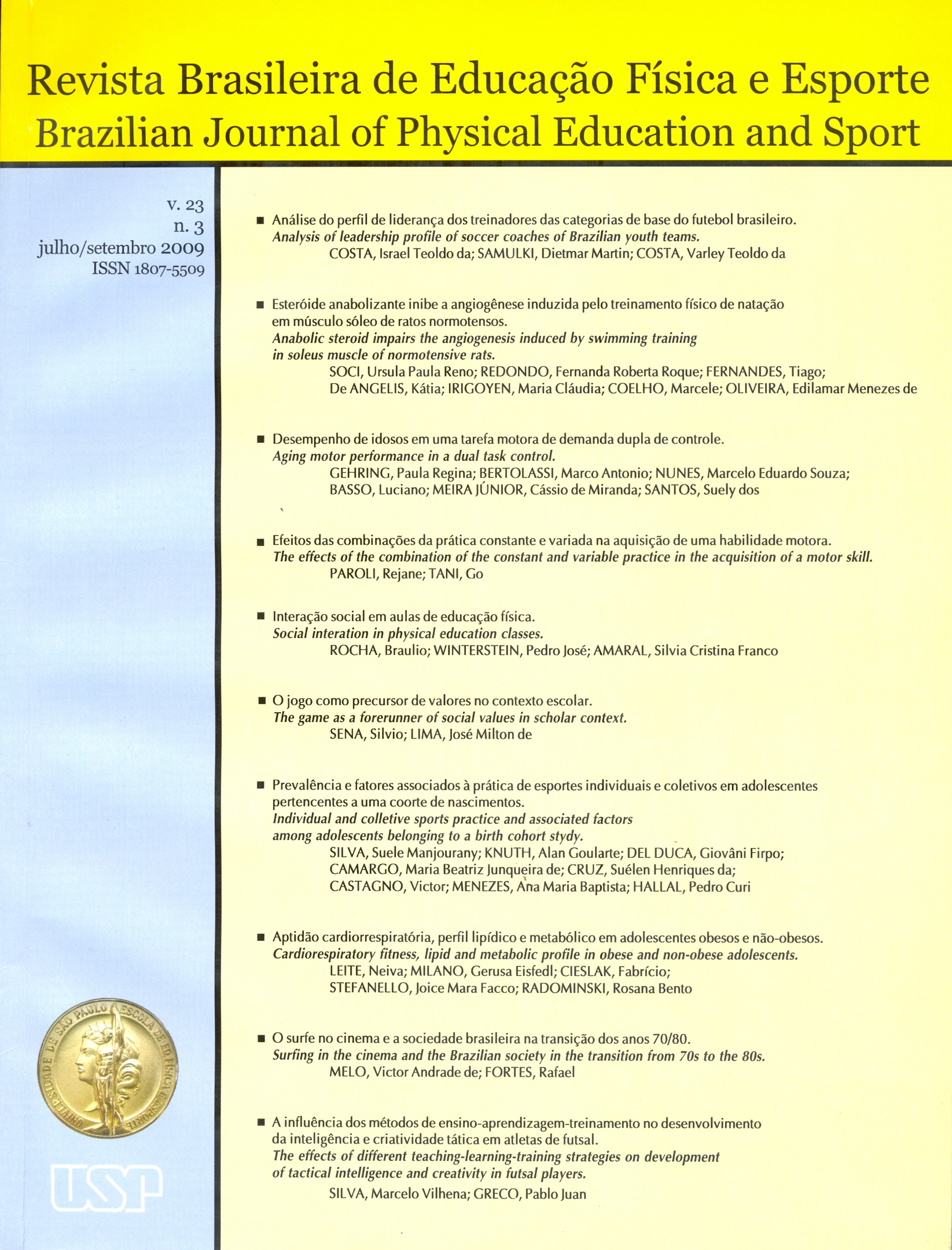Anabolic steroid impairs the angiogenesis induced by swimming training in soleus muscle of normotensive rats
DOI:
https://doi.org/10.1590/S1807-55092009000300002Keywords:
Doping, Blood flow, Capillary, Skeletal muscle, Swimming trainingAbstract
Androgenic anabolic steroids (EAA) are synthetic derivatives of testosterone, used in therapeutic dosages in medical practice and in high doses by physically active people that could be health damaging. To study the effects of EAA on the cardiovascular system, Wistar rats were randomized into Sedentary Control (SC), Sedentary Steroid (SA), Trained Control (TC) and Trained Steroid (TA) groups. We evaluated the effects of swimming training (60min/day, 5x/week during 10 week) and AAS (nandrolone decanoate - 5 mg/kg sc, 2x/week) on cardiac output, basal blood flow (Qb, DC basal) and after injection of a vasodilator to observe the endothelium dependent vasodilatation (acetylcholine - Q Ach)(Q Ach, DC Ach), capillary to fiber ratio (r c/f) and vascular-endothelial growth factor expression (VEGF) in soleus muscle (oxidative fibers). Serum testosterone increased in SA and TA. Exercise training significantly decreased resting heart rate. Qb was not different among groups, and QAch was higher in TC group, however in TA group this beneficial effect of swimming exercise training was lost by association with EAA. Rc/f and VEGF were higher only in TC group. These results suggest that swimming training associated with EAA inhibit angiogenesis and arteriogenesis observed as effects of aerobic training, and impairs the red skeletal muscle blood flow which predispose physically active AAS users to vascular diseases.Downloads
Download data is not yet available.
Downloads
Published
2009-09-01
Issue
Section
naodefinida
License
Todo o conteúdo da revista, exceto onde está identificado, está licenciado sob uma Licença Creative Commons (CC-BY)
How to Cite
Soci, U. P. R., Redondo, F. R. R., Fernandes, T., Angelis, K. D., Irigoyen, M. C., Coelho, M., & Oliveira, E. M. de. (2009). Anabolic steroid impairs the angiogenesis induced by swimming training in soleus muscle of normotensive rats . Brazilian Journal of Physical Education and Sport, 23(3), 195-209. https://doi.org/10.1590/S1807-55092009000300002


